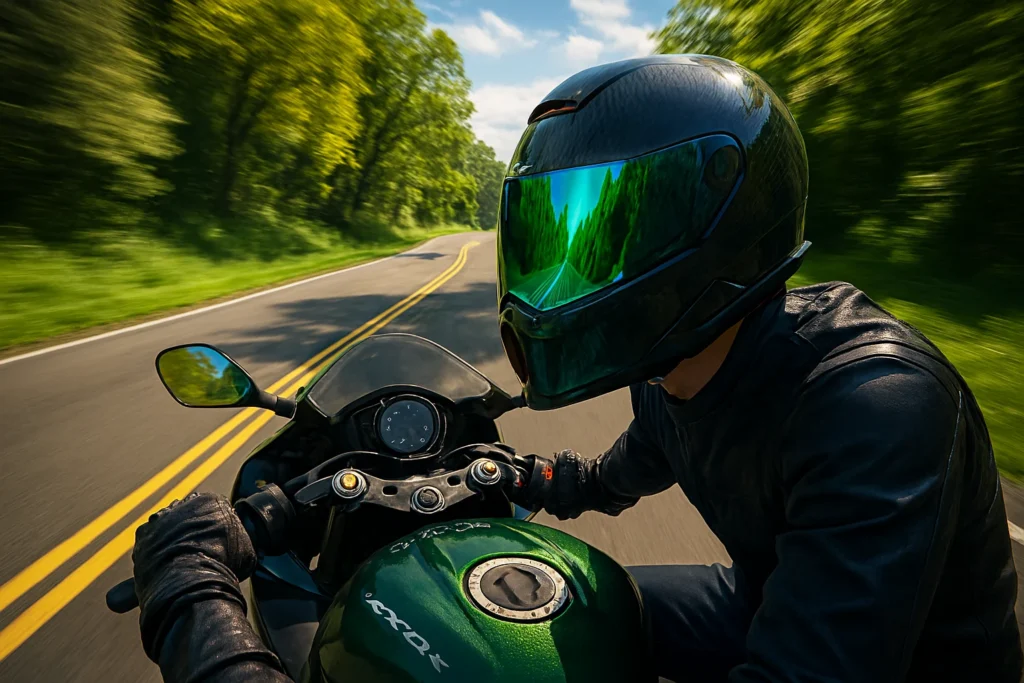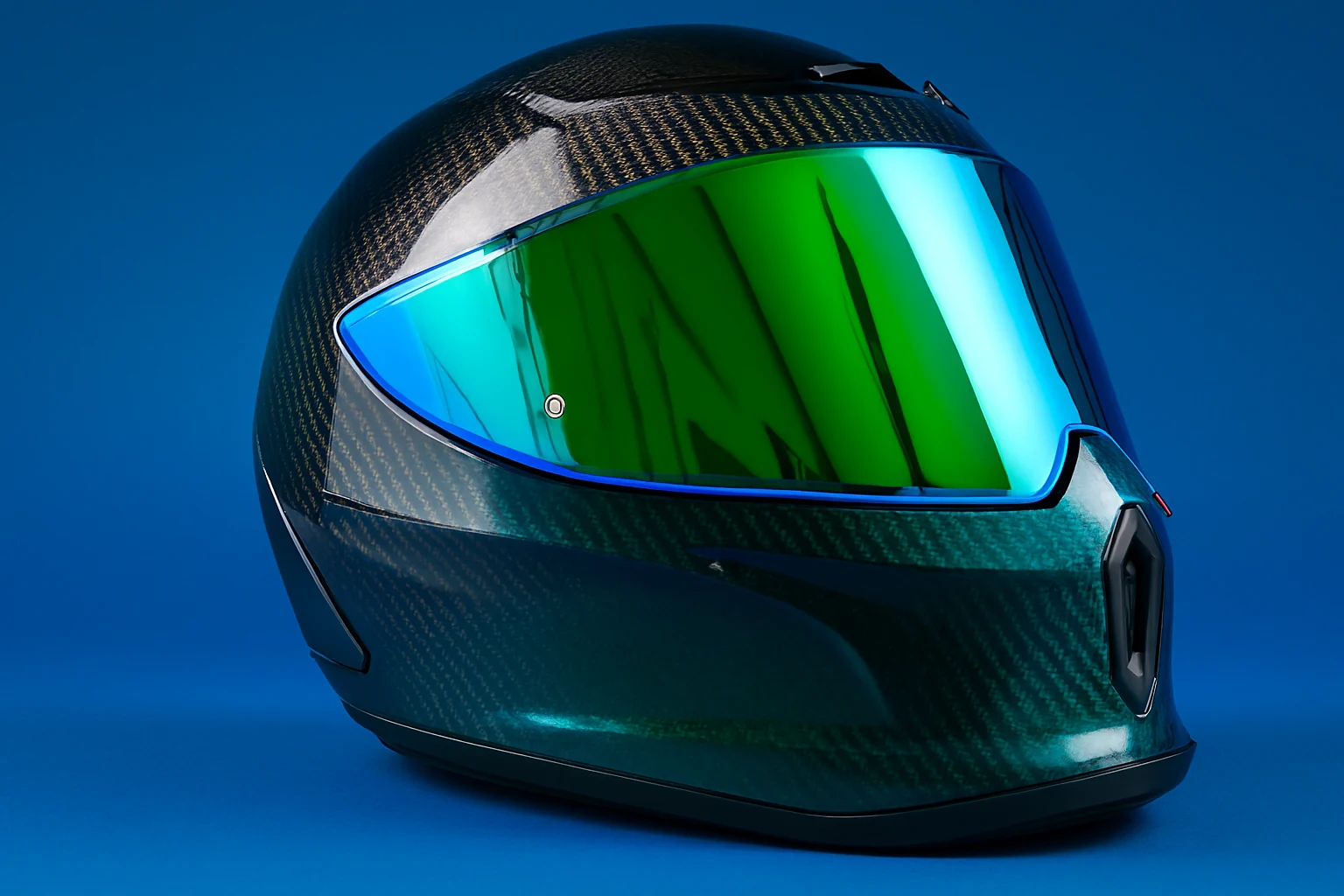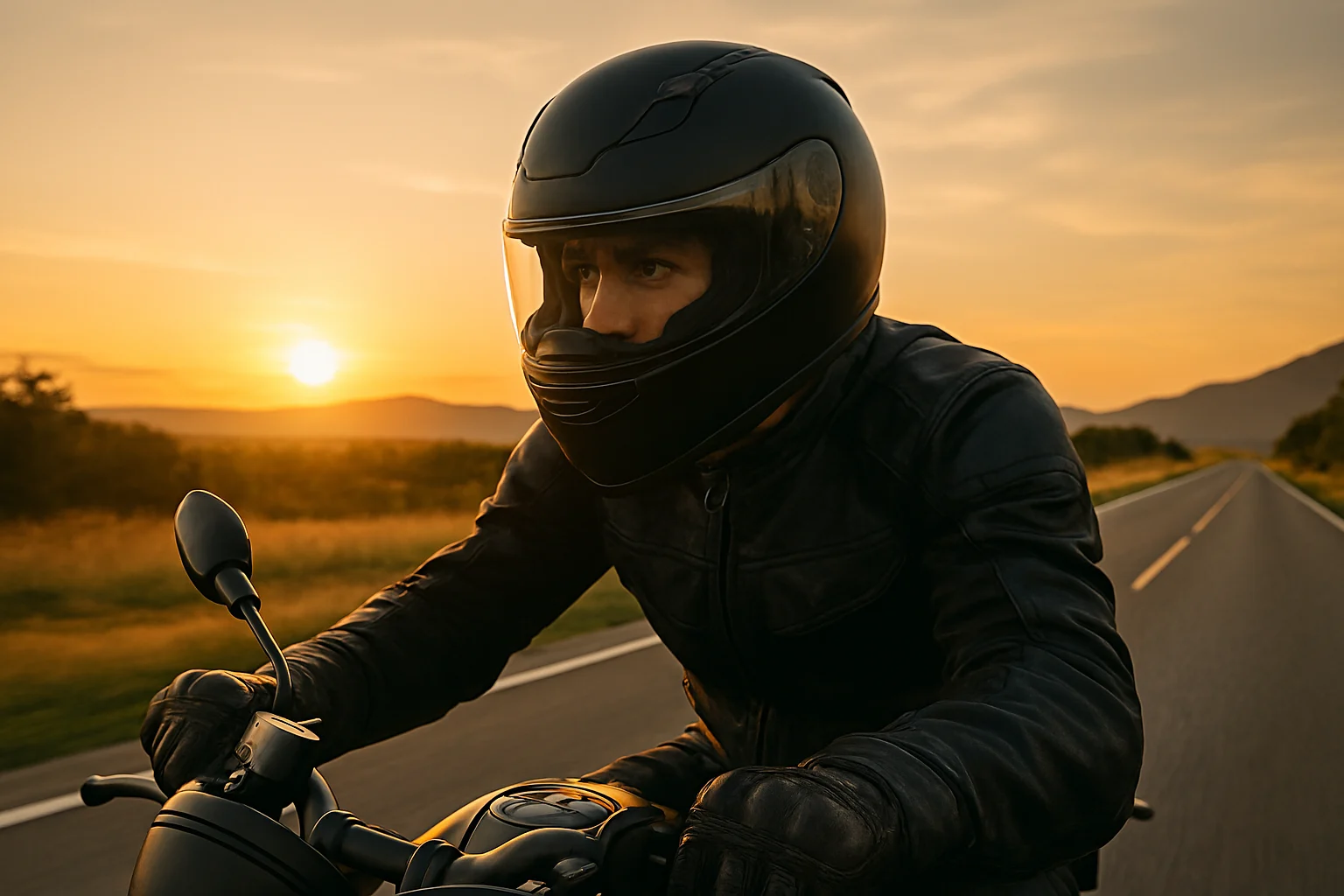I’ve been riding seriously for nearly two decades. I have helmets from top brands like Shoei and Arai. So when I first heard about Ruroc helmets, I thought: Why would anyone spend £350 on a Ruroc helmet when you can get a far superior Shoei or Arai for the same money? That was exactly what one Reddit user wrote and I agreed: it sounded daft.
Still, curiosity got me. I bought a Ruroc EOX helmet in Carbon style and rode it through spring and summer across my ZX‑6R, GS, and more. Now I want to answer your question: Is Ruroc a good helmet for bikers?
If you’re considering switching from a full-face to something more versatile, learn exactly what is a modular helmet and how it compares for daily riders.
Summary Table: Is Ruroc a Good Helmet?
| Feature | Ruroc EOX Helmets |
| Shell Material | Carbon/Kevlar composite |
| Safety Rating | ECE 22.06 certified |
| Fit Comfort | Needs padding adjustment, moderate bulk |
| Ventilation | Functional but drafty in cold weather |
| Weight | ~1600g large size |
| Wind Noise | Noticeable, reduced with earplugs |
| Visor Features | Pinlock insert, quick‑release, no sunshade |
| Extras Included | Second cheek pads, visors, sleeve |
| Style Factor | Bold, futuristic carbon finishes |
| Compared to Shoei/Arai | Less refined fit and quieter but cheaper |
Why I Even Bothered Trying a Ruroc Helmet
I thought Ruroc was mostly for Instagram shots and looking flashy. I assumed the build quality and protection would be lacking. But reviews mentioned it has ECE 22.06 certification and real carbon‑Kevlar composite shells in their top models. For that price point at the time, that seemed worth testing in real riding conditions.

Also, I ride with a helmet track me and safety device installed, so I care deeply about fit, weight, and comfort. If a Ruroc helmet tracks well and stays comfortable over long rides, that could surprise me.
First Impression: Style Over Substance?
When the Ruroc EOX arrived, it looked striking. The carbon weave, the gloss finish that shifts from green to blue, the futuristic minimal branding, definitely not something I’d get from Shoei. On a visual level, my motorcycle gear game just leveled up.
But style disappears fast if the fit, ventilation, or noise is bad. So I tested it all. Before making a choice, you might wonder, are modular helmets safe enough for long highway rides? The answer might surprise you.
Fit and Comfort: Mixed Results
I tried two sizes: medium (57–58 cm) and large (59–60 cm). I typically fit a 58, but the medium Ruroc EOX felt tight on the forehead and padded straps pressed at the back. The large was more comfortable, but externally felt chunkier than other helmets.
Inside, the cheek pads are removable and Ruroc supplies smaller cheek pads in the box. That helped me dial in a better fit, though the emergency pull tabs tore on one side when I tried to remove pads quickly. They are there, but not as reliable as others I’ve used.
After an hour on a GS touring ride, I got a slight mark on my forehead and a bit of neck pressure from head movement. It wasn’t painful, but less plush than Arai or Shoei types.
Verdict: Fit is average, plan to try different sizes and maybe swap cheek pads.
Weight and Aerodynamics
On my scale, the size large Ruroc weighed in at 1,601 grams. My Arai Quantic was 1,588 grams and Shoei NXR2 at 1,392 grams. So yes, the Ruroc is heavier than Shoei and close to Arai but with a chunkier profile and some head drag on open roads.
If your neck is strong and your riding style is upright or touring based, the extra weight may not bother you much. For aggressive tuck positions or long trackdays, you may feel wind drag when turning your head.
If you’re torn between a Ruroc and a flip-up option, find out are modular helmets as safe as full-face models in real crash scenarios.
Ventilation and Breathability
Ruroc corrected previous models’ fake vents and gave the EOX functional chin vent, two-stage intake and top vent system, and an always-open rear exhaust. At low speeds, I felt air feeding the visor area and just under the chin on the second stage. Top vent helped keep airflow to my brow. I ride a naked ZX‑6R bike, so with windscreen off the breeze worked nicely even in humid weather.
However, the visor aperture has a deliberate gap and some winter riders reported draftiness. My glasses fogged less in this helmet because of the airflow. Even in heavy rain, no water pooled inside the visor, small amounts at the edge disappeared fast once movement resumed.
Visor and Sun Shield
The EOX comes with a Pinlock 120XLT anti-fog insert and a dark smoke visor. I added a green iridescent visor which cost extra. There is no internal drop-down sun shield like some Shoei helmets. Instead the dark visor must be swapped for changing light. It was fine but less convenient if the sun popped out mid ride.
Visor locking runs in a ratchet with two mid-stops. At speed, I noticed it didn’t hold mid positions well unless fully open. Quick release mechanism works but felt fragile at first; I scratched the shell slightly when first removing it. With care it is fine.
Tip: Swap visors slowly using bottom edge, not crude pulling of the top.
Noise and Wind Management
This helmet is chunkier and not as streamlined. That means more wind noise, especially at highway speeds or in full tuck. I used earplugs and that made a big difference. Unlike some quieter helmets, the Ruroc did not isolate all turbulence, but it handled moderate wind without head ache.
The chin curtain helps reduce bottom draft, but overall wind noise is noticeable compared to Shoei or Arai models. For anyone new to riding or exploring gear alternatives, understanding what is a modular motorcycle helmet can help guide your decision.
Safety Certification and Feeling
It meets ECE 22.06 safety standard. The shell composite of carbon, Kevlar, fiberglass feels strong and well layered. I did not crash in testing, but it feels solid. The inner liner features Rheon energy‑absorbing armor pads designed to reduce rotational energy, a feature not common in lower cost helmets.
So in a crash test, it should perform well. But personally I prefer the fit and comfort of a full Shoei or Arai. Still, it is certified safe and adequate for street riding and track days at that price point.
Illustrated Helmet Breakdown Diagram

Why Might Someone Choose Ruroc Over Shoei or Arai?
From Reddit and forums many older riders scoff, calling it something teenagers wear. I get that. But here is what people may like if they buy one:
- Visual style: It looks high-tech, futuristic, and stands out in photos.
- Carbon shell: Real carbon‑Kevlar shell on some models, unlike basic plastics.
- Extras included: Pinlock insert, cheek pad options, additional visors.
- Shockwave intercom integration: Easy to install.
- Good ventilation in many real world use cases.
If you want to stand out with carbon styling and don’t mind a bit of extra noise or weight, Ruroc delivers at a price under £400, whereas final-deal Arai or Shoei models may cost more (especially with extras).
Who Should Avoid It
If comfort, quiet, and premium fit matter most, and you are fine spending more, stick with Arai or Shoei or AGV. If you need minimal wind noise, perfect seal, and constant comfort at high speed, the Ruroc may not satisfy.
Reddit users frequently say: Why would anyone in their right mind choose Ruroc for £350 over Shoei or Arai for same price. I understand that sentiment after riding it.
Is Ruroc a Good Helmet for Bikers?
Yes and no. For style, carbon look, and features in that price range, Ruroc is good. Perfect if you ride city and weekend trips, like customization, and want something unique. It’s also good if you value emergency tags, easy visor swaps, and ventilation.
But if you want best comfort, lowest noise, lighter weight and perfect fit, then I stick with my Shoei or Arai. Those feel world-class in long rides and silence, but cost more or lack the bold look.
Tips for Riders Who Want to Test It
- Try at least two sizes. Medium vs large may fit very differently.
- Test cheek pad customization for fit.
- Add earplugs to reduce wind noise.
- Know visor changes take practice.
- Check emergency pull tabs and fastener quality.
- Use in real riding conditions before riding long distances.
Conclusion
So is Ruroc a good helmet? If you value visual flair, built‑in extras, real carbon composite, and you’re okay with slightly heavier and noisier performance, then yes, it is a smart buy under £400.
But if comfort, silence, and perfect ergonomics are your priority, and budget allows, I would still recommend Shoei or Arai every time.
In other words: Ruroc is worth buying if you ride to stand out. But if you ride for comfort and refinement, the premium Japanese brands remain the gold standard.
If you’re comparing Ruroc to other names in the market, you’ll want to check out are Voss helmets good before settling on your final pick.





